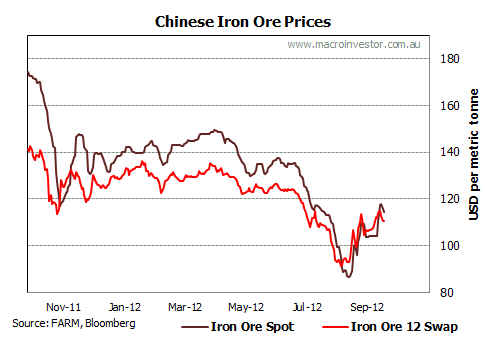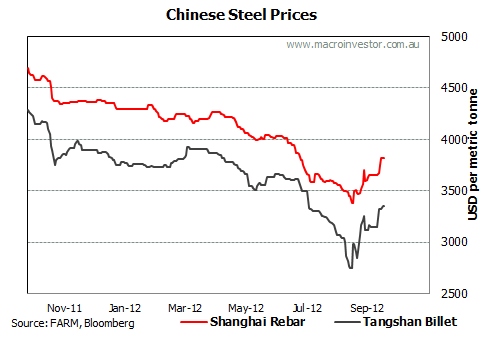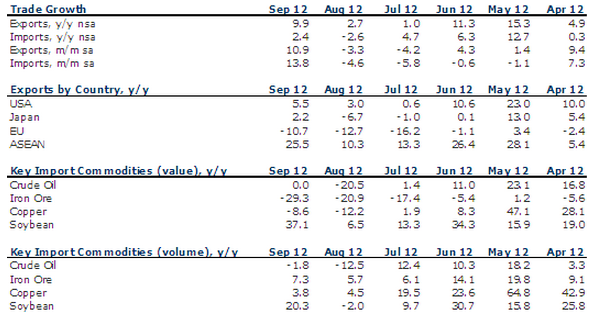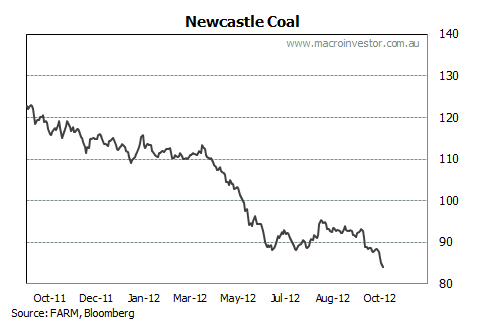And so, big news for ore lovers over the weekend. First, here is Friday’s price table:

Here is the ore chart:

And the Chinese steel chart:

No good news there. Indeed, the ore bounce appears to be over, for now anyway. According to Bloomberg, and as we know already, it was driven by speculation that end-user demand will pick-up:
Iron ore imports by China, the world’s biggest buyer of the commodity, climbed to a 20-month high on speculation steel demand may increase.
Imports totaled 65.01 million metric tons in September, China’s customs bureau said today on its website. The shipments, the highest since January 2011, rose 4.1 percent from August and 7.3 percent from the 60.57 million tons a year earlier, according to data compiled by Bloomberg.
Prices for the steelmaking material, which plunged to a near three-year low of $86.70 a ton on Sept. 5, have rebounded 32 percent after China announced plans for extra infrastructure spending. The nation’s exports grew at the fastest pace in three months in September, easing concern that the global economy is heading for the first recession since 2009.
“Expectation of higher steel consumption in autumn also triggered some buying activities,” Zhou Yuanjian, a Shanghai- based analyst with Mysteel.com, said by phone before the imports announcement.
Wow! What a comeback. Except for one small detail. Here are some of the internals of the same Chinese customs report for iron ore:

Yes, that is a 29.3% collapse in the value of iron ore imports, despite a 7.3% bounce in volumes. Just a bit perspective for ya!
I do expect end-user demand to arrive by year’s end but not an avalanche. Perhaps enough to hold prices at around these levels.
But let’s not forget also that thermal coal has now broken its support and is floating freely downwards:
It is likely that there are more heavy falls ahead for Australia’s trade deficit. October is probably the month when the new iron ore contract prices from the September quarter hit the market. There will be some offset from the now rising spot market. But with both coals still falling in spot and contract terms, not enough.


